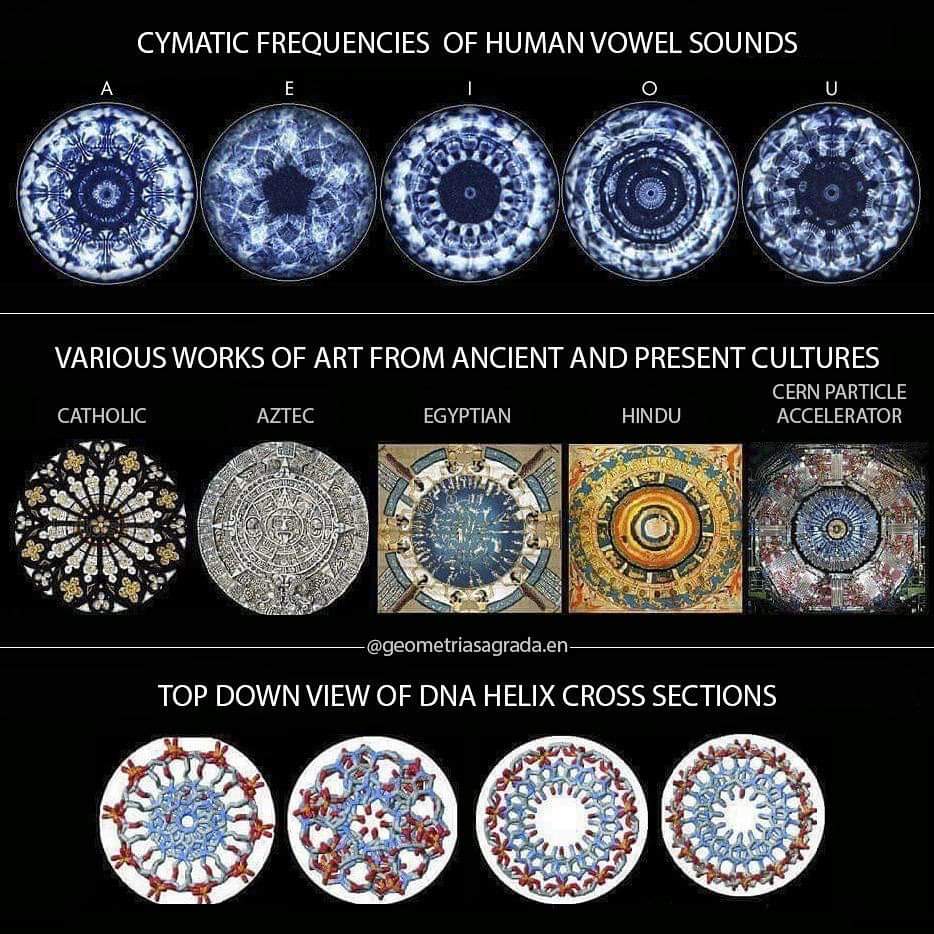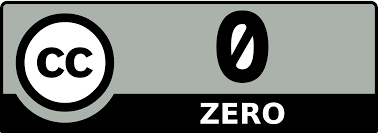CYMATICS
Cymatics is the study of visible sound and vibration. Typically the surface of a plate, diaphragm, or membrane is vibrated, and regions of maximum and minimum displacement are made visible in a thin coating of particles, paste, or liquid.
Below a short introduction and demonstration by Evan Grant at TEDTalks
HOW DOES IT WORK?
A common Physics demonstration utilizes a square metal plate (known as a Chladni plate), a violin bow or speaker and salt. Salt (or sand) is sprinkled upon the plate in an irregular pattern. When a tone is generated by the speaker or by strumming the plate with the bow, the plate begins vibrating. The salt upon the plate begins vibrating and forms a pattern upon the plate.
All objects have a set of natural frequencies at which they vibrate; and each frequency is associated with a standing wave pattern. The pattern formed by the salt on the plate is the standing wave pattern associated with one of the natural frequencies of the Chladni plate. As the plate vibrates, the salt begins to vibrate and tumble about the plate until it reaches points along the plate that are not vibrating. Subsequently, the salt finally comes to rest along the nodal positions. Being unable to move, they become nodal points – points of no displacement.
Another method that became popular (generating “prettier” images) is the use of a bowl with water placed upon a speaker, or simply water pored directly upon a water-resistant speaker cone. When a tone is generated by the speaker, the water starts to “ripple” and forms patterns. In order to see these patterns a light is places above the bowl.
More recently yet another method has been used. An ultrasonic field is used to levitate a liquid drop and when the strength of the field is changed, the shape of the drop changes as well. The result is a 3-dimensional visualization of sound frequencies.
John Telfer used yet another method to visualize sound vibrations. If a bubble is vibrated with a low frequency sine wave it adopts steady states of vibration. For video fragments do visit John Telfer’s website.


HISTORY
The study of the patterns produced by vibrating bodies has a venerable history.
Leonardo Da Vinci noticed that vibrating a wooden table on which dust lay created various shapes. One of the earliest to record that an oscillating body displayed regular patterns was Galileo Galilei. In Dialogue Concerning the Two Chief World Systems (1632).
On July 8, 1680, Robert Hooke was able to see the nodal patterns associated with the modes of vibration of glass plates. Hooke ran a bow along the edge of a glass plate covered with flour, and saw the nodal patterns emerge.
In 1787, Ernst Chladni repeated the work of Robert Hooke and published “Entdeckungen über die Theorie des Klanges” (“Discoveries in the Theory of Sound”). In this book, Chladni describes the patterns seen by placing sand on metal plates which are made to vibrate by stroking the edge of the plate with a bow.
(Sources: Wikipedia and www.cymascope.com)
Michael Faraday, the English chemist and physicist, studied what he termed ‘crispations’ between February and July 1831. His diary records many experiments in which he studied the effects of vibration on water, oil and fine grains. Faraday was fascinated by these phenomena and always sensible of good demonstrations to his audiences at the Royal Institution.
Margaret Watts-Hughes, a Welsh woman, experimented with a device she invented in 1885 and named the ‘Eidophone.’ Her invention consisted of a wooden resonating chamber with an open end across which was stretched a rubber membrane, strewn with sand and other media. By singing into a tube that interfaced with the resonating chamber she was able to create ‘voice figures.’ It seems likely that she had been inspired by the work of Michael Faraday since she uses the term ‘crispations’ when discussing the patterns she observed.
Mary Desiree Waller (daughter of a famous English physiologist, August D. Waller) became fascinated by Chladni’s work and recreated all the forms he discovered, taking his work to a higher level. Her book ‘Chladni Figures, a Study in Symmetry was published posthumously in 1961 and includes details of her novel method of exciting plates employing solid carbon dioxide chips. She approached the subject of Chladni Figures with scientific rigor and her work represents a rich resource for students of this branch of acoustics, including some of the mathematical equations that describe the phenomena.
HANS JENNY
Throughout the 1960s, up until his death in 1972, Swiss medical doctor and Anthroposophist, Hans Jenny took a methodological and exhaustive approach to documenting Cymatic phenomena. He coined the term “Cymatics” in his 1967 book, Kymatik (translated Cymatics). He also documented his experiments in 16mm films which have since been re-released on a DVD entitled Cymatic SoundScapes: Bringing Matter to Life with Sound.
JOHN STUART REID
John Stuart Reid is an acoustics engineer who carried out cymatics research in the King’s Chamber of the Great Pyramid of Egypt in 1997. Reid subsequently began experimenting with instrumentation that would enable an accurate visual equivalent of sound to be created from any audible sound, resulting in the invention of the CymaScope, a patented scientific instrument. Reid worked with American design engineer, Erik Larson to engineer the instrument to Pythagorean proportions.
ALEXANDER LAUTERWASSER
Contemporary German photographer, philosopher and Cymatic researcher, Alexander Lauterwasser has brought the work of Hans Jenny into the 21st Century using finely crafted crystal oscillators to resonate steel plates covered with fine sand and also to vibrate small samples of water in Petri dishes. His first book, “Wasser Klang Bilder” (Water Sound Images) features imagery of light reflecting off of the surface of water set into motion by sound sources ranging from pure sine waves, to music by Ludwig van Beethoven, Karlheinz Stockhausen, electroacoustic group Kymatik (who often record in surround sound ambisonics), and overtone singing. In 2006, MACROmedia Publishing published the English version of the Lauterwasser book titled Water Sound Images.
The tube on the left is in German, the tube on the right is synchronized in French.
ROSSLYN CHAPEL
Composer Stuart Mitchell and his father T.J. Mitchell claim that Rosslyn Chapel‘s carvings contain references to Cymatics patterns. In 2005 they created a work called The Rosslyn Motet realised by matching Cymatics/Chladni patterns to the 13 geometric symbols carved onto the faces of 213 cubes emanating from 14 arches. The hypothesis that the carvings represent Chladni patterns is not supported by scientific or historical evidence. One of the problems is that many of the ‘box’ carvings are not original, having been replaced in the 19th century following damage by erosion.
SCIENCE VS. MUSIC (BY NIGEL STANFORD)
I would like to close this blog article with a cool music video that contains cymatics …
SOURCES
- Wikipedia: http://en.wikipedia.org/wiki/Cymatics
- John Stuart Reid / www.cymascope.com

